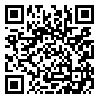Volume 11, Issue 2 (2021)
Naqshejahan 2021, 11(2): 27-48 |
Back to browse issues page
Download citation:
BibTeX | RIS | EndNote | Medlars | ProCite | Reference Manager | RefWorks
Send citation to:



BibTeX | RIS | EndNote | Medlars | ProCite | Reference Manager | RefWorks
Send citation to:
Mottaghi M, Norouzborazjani V, Dehbashisharif M. The Role of Adaptive Reuse in Network of in-between Spaces and Intracity Dynamism; Case Study: Tehran Historic Houses. Naqshejahan 2021; 11 (2) :27-48
URL: http://bsnt.modares.ac.ir/article-2-53425-en.html
URL: http://bsnt.modares.ac.ir/article-2-53425-en.html
1- Architecture Department, Architecture and Urban Planning Faculty, Central Tehran Branch, Islamic Azad University, Tehran, Iran.
2- Architecture Department, Architecture and Urban Planning Faculty, Central Tehran Branch, Islamic Azad University, Tehran, Iran. , Vid.Norouz_borazjani@iauctb.ac.ir
2- Architecture Department, Architecture and Urban Planning Faculty, Central Tehran Branch, Islamic Azad University, Tehran, Iran. , Vid.Norouz_borazjani@iauctb.ac.ir
Abstract: (1669 Views)
The key to the survival of a historical building is in its active mode and the spirit of dynamism in it. The dynamism of space is always an opportunity to create a stronger relationship between architecture and society, to organize sustainable urban development. Hence, in-between urban networks are highly important in reviving urban dynamism.
The purpose of this article is to recognize and analyze the areas affecting urban dynamism interacting with the concept of in-between space, with the solution of changing the land-use of sumptuous historical buildings based on neighborhood-based contemporization model and seeks to answer the question how intracity dynamism is defined as in-between space.
In order to achieve the objectives of the research, the process of analysis proceeds by selecting valuable historical buildings and how to change their land-use. This study aims to study the impact of changes in the land-use of selected buildings as an in-between space in urban dynamism by qualitative research of the indicators derived from the contemporization theory and has evaluated the effectiveness of metrics using the opinions of four groups of participants.
Several rehabilitated historical houses in Tehran were analyzed with TND approach and an emphasis on the neighborhood-based contemporization theory, then areas and strategies affecting urban dynamism resulting from land-use change were extracted, and finally, the most obvious effective characteristics in selected in-between buildings were introduced as urban communication network.
The purpose of this article is to recognize and analyze the areas affecting urban dynamism interacting with the concept of in-between space, with the solution of changing the land-use of sumptuous historical buildings based on neighborhood-based contemporization model and seeks to answer the question how intracity dynamism is defined as in-between space.
In order to achieve the objectives of the research, the process of analysis proceeds by selecting valuable historical buildings and how to change their land-use. This study aims to study the impact of changes in the land-use of selected buildings as an in-between space in urban dynamism by qualitative research of the indicators derived from the contemporization theory and has evaluated the effectiveness of metrics using the opinions of four groups of participants.
Several rehabilitated historical houses in Tehran were analyzed with TND approach and an emphasis on the neighborhood-based contemporization theory, then areas and strategies affecting urban dynamism resulting from land-use change were extracted, and finally, the most obvious effective characteristics in selected in-between buildings were introduced as urban communication network.
Keywords: Neighborhood-Based Contemporization, Modern heritage, Sustainability, Highperformance architecture, Tehran Beautification Organization, Municipality of Tehran
Article Type: Qualitative Research |
Subject:
Highperformance Architecture
Received: 2021/06/19 | Accepted: 2021/07/6 | Published: 2021/06/22
Received: 2021/06/19 | Accepted: 2021/07/6 | Published: 2021/06/22
Send email to the article author
| Rights and permissions | |
 |
This work is licensed under a Creative Commons Attribution-NonCommercial 4.0 International License. |









